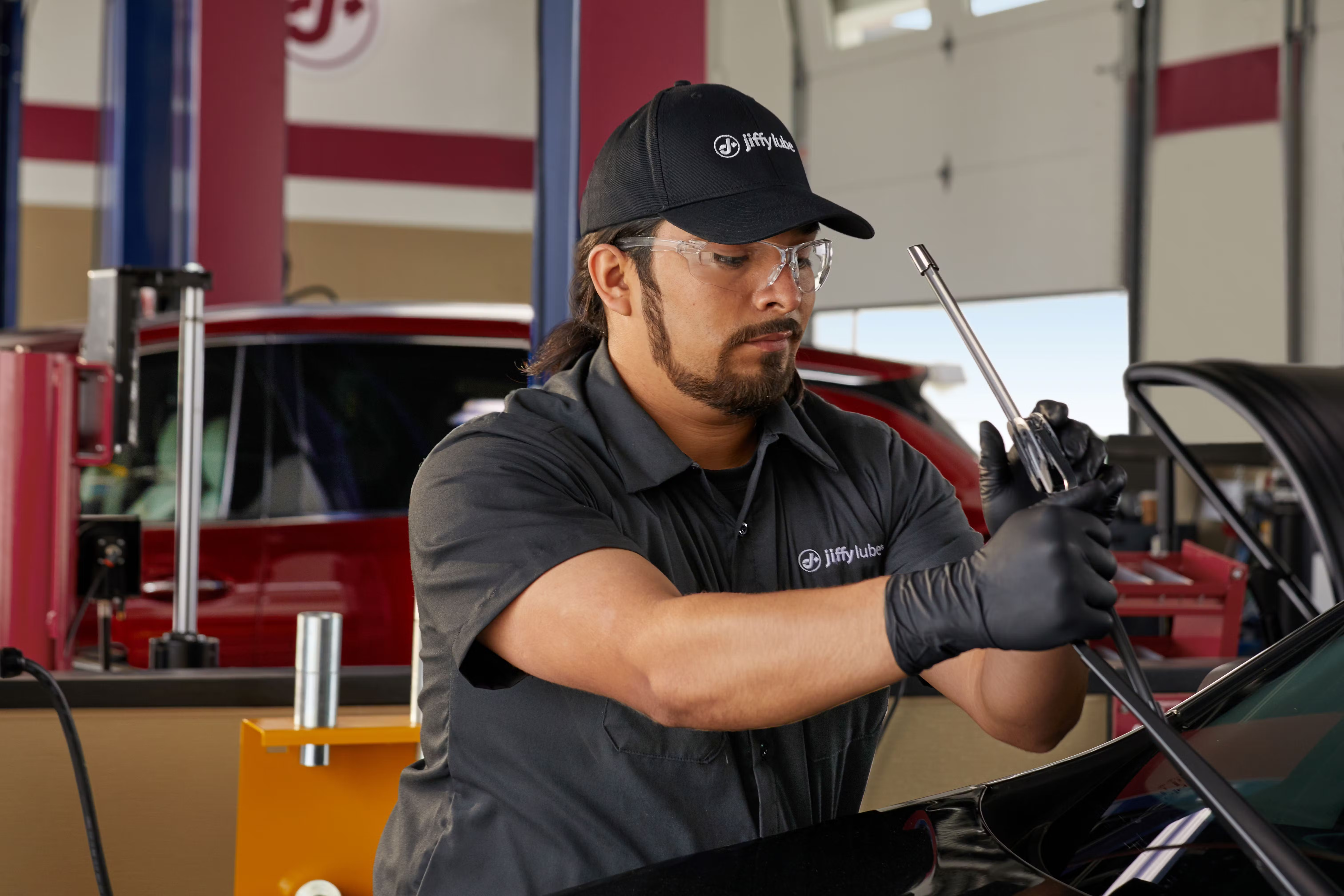A clear view of the road ahead is one of the most important aspects of safe driving. Your windshield wipers keep excessive water, snow, and dirt from accumulating on your windshield to help maintain clear visibility. Imagine driving in the rain or snow without your wipers. But like many vehicle parts, windshield wipers don’t last forever, and require regular maintenance. Let’s go over how often you should change your windshield wipers, the importance of replacing your wipers, and how you can do it.
When to Change Windshield Wipers
Most manufacturers don’t have a prescribed change interval like “change every year or 12,000 miles.” The biggest factor for knowing when to replace your windshield wipers is wear and tear. Over time, your wipers’ rubber materials break down due to oxidation and exposure to the sun’s UV rays, causing them to become stiff and brittle. Also, your wipers can wear out by repeatedly moving back and forth across your windshield.
So how do you know when it’s time for a change? Be on the lookout for these telltale signs:
- Chattering — Don’t just crank up the radio to block out this annoying sound. “Chattering” typically means that the wiper’s rubber blade is being dragged across the glass, and isn’t making proper contact with the windshield.
- Streaking — If you notice grime, dirt, or water on your windshield even after spraying wiper fluid, your wipers could be dirty. However, if you’re still dealing with this problem after wiping them down with a cloth, it might be time to replace your wipers.
- Damaged frames — Wipers frames, the plastic and metal material that keeps the wiper blade in place, can get damaged pretty easily, especially when scraping snow and ice off your windshield before your morning commute. If you notice your frames are bent or damaged, your wipers may chatter, leave streaks, not make contact with your windshield, or fail to move when activated.
- Sunny weather — Do you live in Arizona, Nevada, or another desert state? Wiper blades can deteriorate faster and need more frequent replacement due to the extreme, dry heat, so keep an eye out for your wipers if this applies to you.
How to Replace Windshield Wipers Yourself
Feeling like a DIYer? It’s important to refer to your vehicle’s owner’s manual for the specific instructions for your vehicle, but here are a few general guidelines for changing your windshield wipers.
- Measure your wiper blades or check your vehicle’s manual to determine your wiper’s proper size.
- After you get the correct wiper blade, lay a towel across your windshield to help protect it while changing your wipers.
- Lift the wiper arm and blade off the windshield.
- Press the locking button or unhook the latch if your wiper blade has one. Then, pull the blade straight down to release it from the arm.
- Slide the new wiper into the arm’s hook and push it down until you hear a click. If your wiper has a latch, close the latch to secure your new wiper.
Need Some Help? Visit Your Local Jiffy Lube for Windshield Wiper Replacement
While you can definitely DIY your wiper blade replacement, you may prefer a little help. The team at Jiffy Lube is happy to inspect your wiper blades for wear, cracks, irregular spots, and other replacement signs. If a replacement is needed, they will carefully install new wiper blades that meet Original Equipment Manufacturer (OEM) specifications, ensuring greater longevity and clearer visibility on the road ahead.
After all, excellent visibility is key to safe driving, and optimal windshield wiper performance helps ensure you can see the road with a clear, unobstructed view.

NOTE: Not all services are offered at all Jiffy Lube service centers. Please call ahead or check jiffylube.com to ensure the service is available at the Jiffy Lube location near you.


